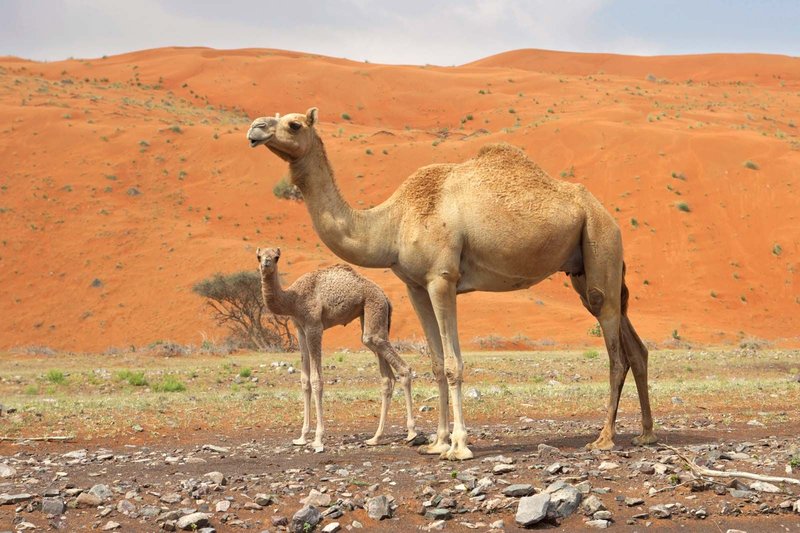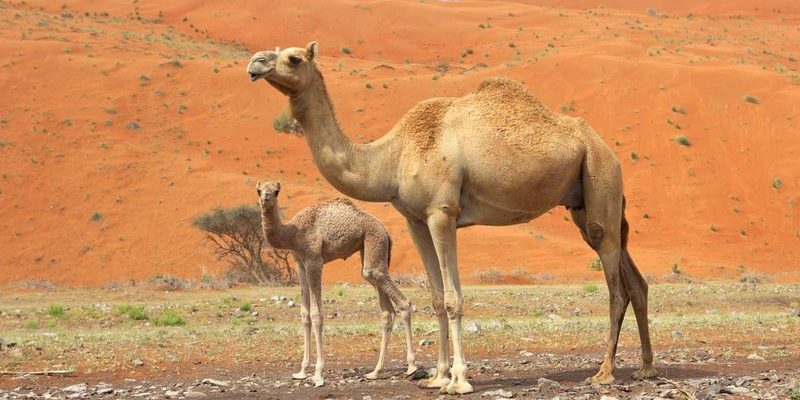
Dromedaries are not just built for the heat; they have fascinating biological features and behaviors that help them cope with extreme conditions. Think of them as nature’s master survivalists, equipped with specialized tools and tricks to manage their environment. In this exploration, we’ll uncover how these amazing animals use their unique biology, dietary habits, and social behaviors to thrive even in the most challenging settings.
Unique Physical Adaptations
One of the standout features of dromedaries is their unique physical adaptations. These camels have a range of characteristics that make them suited for desert life. Their bodies store fat in that famous hump, which acts as an emergency food reserve. This means they can survive for days without eating, relying on the stored fat when food is scarce.
Moreover, dromedaries have a remarkable ability to withstand extreme temperatures. Their body temperature can fluctuate, allowing them to avoid sweating during the hottest parts of the day. Imagine being able to keep cool without needing to drink water constantly! This ability not only helps them stay hydrated but also reduces the risk of dehydration in those sweltering conditions.
Their thick, leathery skin protects them against harsh sun exposure and helps retain moisture. Plus, their long legs enable them to walk efficiently over sand, helping them cover great distances in search of food and water. All these adaptations make the dromedary a champion of survival in one of the most challenging environments on Earth.
Water Conservation Techniques
You might be wondering how dromedaries manage to survive without water for extended periods. The secret lies in their exceptional water conservation techniques. Dromedaries can go for weeks without drinking, surviving on the moisture from the plants they eat. When they do find water, they have an incredible capacity to drink. A dromedary can gulp down up to 30 gallons of water in one go, making sure they’re well-hydrated for the next few days.
Interestingly, their kidneys are incredibly efficient at conserving water. When they urinate, dromedaries can produce urine that is more concentrated than that of most animals, which means they lose less water in the process. Their digestive system also plays a role in water retention. By absorbing as much moisture as possible from their food, they effectively keep their water levels balanced, even in extreme heat.
In an environment where water is scarce, these survival strategies are crucial. It’s like having a built-in water bottle, ensuring they have what they need to keep going in the face of adversity.
Diet and Foraging Habits
What do dromedaries eat when the landscape is mostly barren? Their diet and foraging habits are key to their survival. Dromedaries are herbivores, primarily feeding on dry grasses, leaves, and shrubs. They can eat tough, thorny vegetation that many other animals would avoid, thanks to their specialized teeth that can grind down even the most fibrous plants.
In the dry desert, finding food can be a challenge. Dromedaries are opportunistic feeders and can travel long distances to seek out edible plants. Their broad, padded feet help them navigate sandy terrain without getting stuck, making them efficient foragers.
One fascinating aspect of their diet is their ability to eat salty and bitter plants without any ill effects. This adaptability allows them to thrive in environments where other animals might struggle to find suitable nourishment. It’s a bit like having a gourmet palate for the most challenging menu!
Social Behavior and Herd Dynamics
Dromedaries are social animals, and their social behavior plays a crucial role in their survival. They often travel in groups, which provides safety in numbers. When one camel finds a food source or water hole, the others can benefit from that discovery. This collective foraging helps them share resources, increasing their chances of survival.
Within these herds, social hierarchies can develop. More dominant camels may lead the group to the best feeding grounds or water sources, ensuring that the entire group has access to what they need to thrive. It’s fascinating to see how their social dynamics help them adapt to their environment.
Additionally, bonding among dromedaries fosters emotional support. Camels can be affectionate, often displaying behaviors like grooming each other. This social interaction not only strengthens their relationships but also can reduce stress, which is vital in a harsh environment.
Adaptations to Extreme Temperatures
The desert can experience extreme temperatures, swinging between blistering hot days and chilly nights. Dromedaries have developed incredible adaptations to cope with these shifts. Their thick fur serves as insulation against the cold night air while reflecting sunlight during the day to keep them cooler. It acts like a natural temperature regulator.
During the hottest part of the day, dromedaries can find shade to rest and conserve energy. They’re also known to change their activity patterns, becoming more active during the cooler times of day, like early morning or late afternoon. It’s a smart survival strategy that helps them avoid the most severe heat when possible.
In addition, their ability to go without water for extended periods allows them to endure long treks in search of shade and food. You can think of them as nature’s thermoregulation experts, adapting seamlessly to their fluctuating environment.
Emotional and Mental Resilience
Surviving in harsh environments isn’t just about physical adaptations; there’s also a mental aspect to consider. Dromedaries display emotional and mental resilience that aids their survival. Despite the challenges they face, these animals have an impressive capacity to cope with stress and adversity.
Research has shown that camels exhibit emotions similar to humans, including joy and affection. This emotional strength can enhance their bonds with other herd members, boosting group morale. When faced with difficulties, the social support within the herd helps them navigate tough situations more effectively.
Furthermore, dromedaries are intelligent creatures with strong problem-solving skills. They can remember the locations of water sources and food trails, ensuring their survival over time. This intelligence, combined with their social structure, creates a well-rounded survival strategy that equips them to handle the challenges of their environment.
The Importance of Dromedaries in Their Ecosystem
Lastly, it’s important to recognize the role dromedaries play in their ecosystem. They are not just survivors; they also contribute significantly to their environment. By grazing on certain plants, dromedaries help maintain the balance of vegetation in arid landscapes. This grazing can promote biodiversity, allowing other plant species to flourish.
Additionally, their droppings act as natural fertilizer, enriching the soil and promoting new plant growth. In this way, dromedaries support both their survival and the health of their ecosystem. They’re excellent examples of how one species can impact their environment positively.
In conclusion, dromedaries are extraordinary animals, uniquely adapted to thrive in some of the most challenging environments on Earth. From their physical adaptations to their social behavior and emotional resilience, each aspect of their being contributes to their survival. Understanding how dromedaries cope with harsh conditions not only highlights the wonders of nature but also inspires us to appreciate the balance of life in challenging environments. So, the next time you think about survival, remember the humble dromedary and its incredible journey through the desert.

